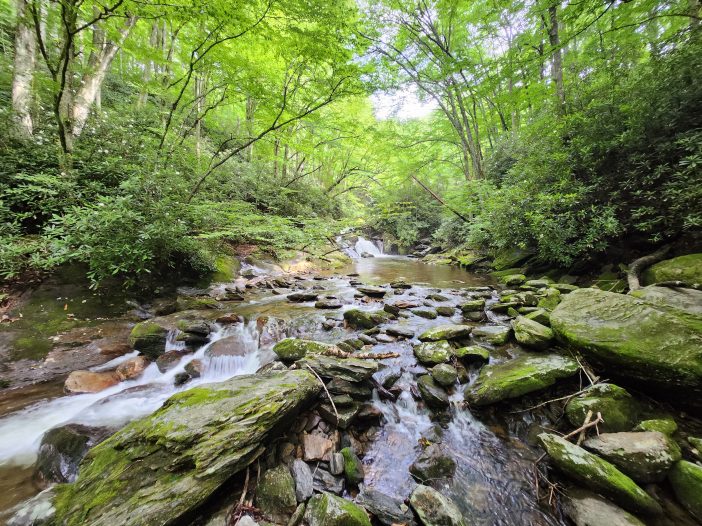Brevard, North Carolina is home to a rare sight: white squirrels. These striking animals aren’t albinos but leucistic gray squirrels with snowy coats and dark eyes. This article explores their unique history, where to find them in town, and why they’ve become a symbol of local pride and care for wild places.
Read MoreLocal Attractions
Solo Backpacking in Western NC: Trails, Gear, and Safety for First-Timers
Thinking about going on your first solo backpacking trip? This guide breaks down everything you need to know from choosing beginner-friendly trails in Western North Carolina to essential gear, safety tips, and mental prep. Whether you’re craving solitude, challenge, or a fresh start, solo backpacking offers a unique chance to reconnect with yourself and the natural world.
Read MoreSkinny Dip Falls: Washed Away But Not Forgotten
Skinny Dip Falls once offered clear pools, a short hike, and a sense of peace near milepost 417 on the Blue Ridge Parkway. After the 2021 flood from Tropical Storm Fred, the falls were torn apart but the memories remain.
Read MoreTranquil Waters: Exploring the Best Natural Swimming Holes in North Carolina
Dive into the natural beauty of North Carolina with our detailed guide on the top ten natural swimming holes in the state. From the verdant Pisgah National Forest to the tranquil waters of White Lake, we take you on a journey through these aquatic gems, providing key information on location, hazards, costs, and access. Embrace the spirit of adventure and immerse yourself in the untamed splendor of the Tar Heel State.
Read More


